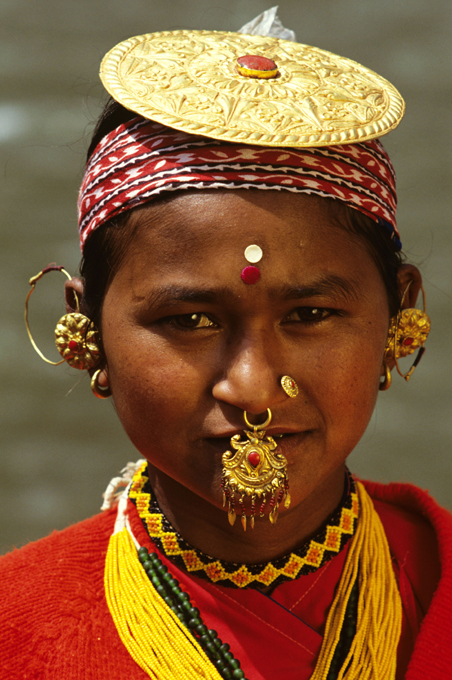Disfigured beauty of tribal women

Surma is a panethnicity residing in South Sudan and southwestern Ethiopia. It includes the Nilo-Saharan-speaking Suri, Mursi and Me'en. Having a lip plate is a sign of beauty and the bigger the plate, the more cattle the woman is worth. This is important when the women are ready to get married.
Surma is a panethnicity residing in South Sudan and southwestern Ethiopia. It includes the Nilo-Saharan-speaking Suri, Mursi and Me'en. Having a lip plate is a sign of beauty and the bigger the plate, the more cattle the woman is worth. This is important when the women are ready to get married.

The Himba are indigenous peoples living in northern Namibia, and in Angola. Himba women especially, as well as Himba men, are remarkably famous for covering themselves with otjize paste, a cosmetic mixture of butterfat and ochre pigment, to cleanse the skin over long periods due to water scarcity and protect themselves from the extremely hot and dry climate of the Kaokoland as well as against mosquito insect bites.
The Himba are indigenous peoples living in northern Namibia, and in Angola. Himba women especially, as well as Himba men, are remarkably famous for covering themselves with otjize paste, a cosmetic mixture of butterfat and ochre pigment, to cleanse the skin over long periods due to water scarcity and protect themselves from the extremely hot and dry climate of the Kaokoland as well as against mosquito insect bites.

The Kayan are a sub-group of Red Karen, Tibeto-Burman ethnic minority of Burma (Myanmar). Women of the Kayan Lahwi tribe are well known for wearing neck rings, brass coils that are placed around the neck, appearing to lengthen it.
The Kayan are a sub-group of Red Karen, Tibeto-Burman ethnic minority of Burma (Myanmar). Women of the Kayan Lahwi tribe are well known for wearing neck rings, brass coils that are placed around the neck, appearing to lengthen it.

The Yanomami people are an indigenous group who live in the Amazon Rainforest around the borders of Venezuela and Brazil. Yanomami women decorate their faces with sticks that pierce the cheeks and lip.
The Yanomami people are an indigenous group who live in the Amazon Rainforest around the borders of Venezuela and Brazil. Yanomami women decorate their faces with sticks that pierce the cheeks and lip.

The Fula people or Fulani are one of the largest ethnolinguistic groups in Africa, numbering approximately 40 million people in total. Beauty is considered very important and one of the ways this is shown is through tattoos that are put all over the body.
The Fula people or Fulani are one of the largest ethnolinguistic groups in Africa, numbering approximately 40 million people in total. Beauty is considered very important and one of the ways this is shown is through tattoos that are put all over the body.

Apatani tribes live in the Indian province of Arunachal Pradesh. Apatani women should have their nose plugged, that is a rite of passage and evidences them as an adult.
Apatani tribes live in the Indian province of Arunachal Pradesh. Apatani women should have their nose plugged, that is a rite of passage and evidences them as an adult.

For many women in India beautiful dress and adornment is a way to worship God.
For many women in India beautiful dress and adornment is a way to worship God.

Earrings are very popular among the women of Nepalese eastern region. The rings may be extemely long, and should be taken up, while eating.
Earrings are very popular among the women of Nepalese eastern region. The rings may be extemely long, and should be taken up, while eating.

The Aucas,living in the South America, were an isolated tribe known for their violence, against both their own people and outsiders who entered their territory.
The Aucas,living in the South America, were an isolated tribe known for their violence, against both their own people and outsiders who entered their territory.



